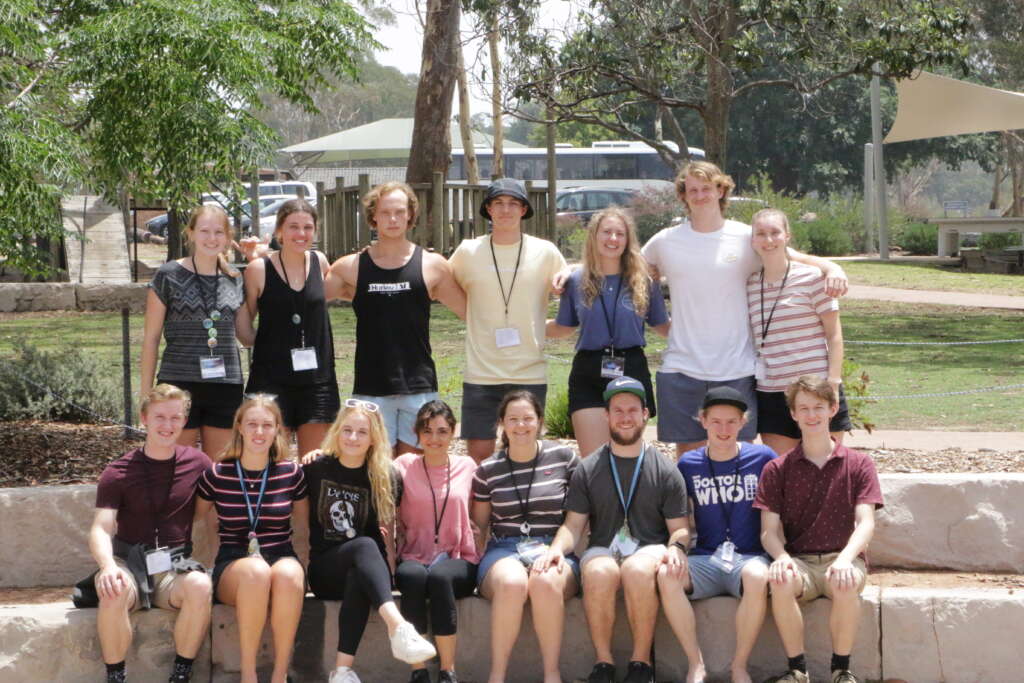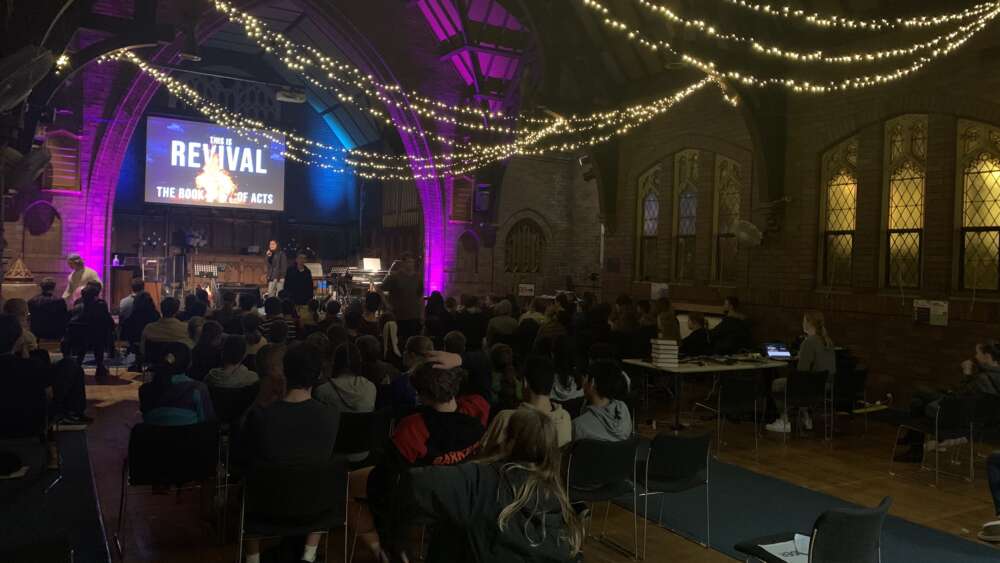COVID hasn't destroyed our youth group – it's grown it!
One surprisingly positive outcome in a challenging year
This time last year, less than 40 kids were turning up for Friday night youth group at St Andrew’s Anglican Church in Roseville, northern Sydney.
But now, amid the COVID-19 pandemic, the group is catering for more than twice that number. In fact, ‘Revive Youth’ has hit the church building’s capacity – with 95 young people coming along at last count.
Across Australia and the world, the disruptive force of COVID-19 has rocked church meetings and groups, as pandemic restrictions radically transform so many areas of society.
While plenty of regular churchgoers are able to lament the loss of meeting together or the limited numbers who may return to buildings, St Andrew’s at Roseville is one example of something positive emerging when we can be only predicting the opposite.
“One of the things that God has been revealing to me is that despite all the things going on in the world and despite the dialogue that the church would shrink, the gospel still goes out,” St Andrew’s youth minister Lauren van der Merwe tells Eternity.
“We shouldn’t expect the church to shrink; we should actually expect for it to grow.” – Lauren van der Merwe
“It’s reminded me how small my view is of God. We had all these amazing plans for our youth group this year … and yet, we didn’t know [COVID-19] was going to happen. But God did, and his Word still goes out. And so we shouldn’t expect the church to shrink; we should actually expect for it to grow.”
After clarifying that this growth is “totally the Lord’s doing”, van der Merwe – who job-shares the youth minister role with her husband Grant – identifies two other contributing factors.
1. Doing the hard yards online
Just as COVID-19 lockdown measures hit Sydney, Grant and Lauren were arriving back from a family holiday overseas. They had to come up with a plan quickly as face-to-face youth group ground to a halt.
“We asked the question, what are the unique opportunities at this time? And rather than just trying to run an online youth service, like what we’d normally do face-face, we decided to produce a whole bunch of content throughout the week,” says van der Merwe.
“Our vision statement is to make mature, healthy disciples of Christ, and so we were trying to address discipleship in a different format.”
Using the Instagram platform, the Revive Youth team posted different content every day of the week.
“We launched weekly Bible reading plans, where we would post on Instagram a passage to read and some questions to answer each day. Every morning (Monday to Friday) we would have a youth leader doing a live devotional on the passage for the day,” van der Merwe explains.
“We wanted to produce a whole bunch of opportunities for our young people to continue to grow in their faith.” – Lauren van der Merwe
They also produced additional content six days a week. “On Mondays, we did an essentials video, where Grant would talk about something like, how do we continue doing church when we’re not gathered together? So he would talk about how we continue to worship, how we continue to pray, how can we continue to read the Bible and that kind of thing.”
“On Tuesdays, we released a 10-minute podcast, where youth leaders chatted about hot topics. So, young people could send in topics and we would chat about it. It was very basic and it was not recorded in the most excellent way, but we just wanted to produce a whole bunch of opportunities for our young people to continue to grow in their faith.
“On Wednesdays, we did a prayer meeting at 4pm via Zoom, to encourage our young people to come and pray. Then on Thursdays, we would release an encouraging Bible verse.
“On Fridays we would have Revive Live (youth group livestreamed). Then on Sundays we would have discussion groups [via Zoom].”

Revive Youth leadership team – pre-COVID
The Revive Youth team kept up this online schedule for 13 weeks. “That meant we didn’t have a break from February until mid-June [when the group went back to face-to-face],” says van der Merwe.
“We felt like we could be one of the consistent voices in young people’s lives during this difficult time, and I’m really thankful we did that.”
While she admits it’s hard to quantify “the fruit” of this online season, van der Merwe points to hundreds of views that Revive’s Instagram page received each week. Another indicator was that young people who weren’t part of the group began to engage with some of the content.
And, when the youth group was able to go back to face-to-face, this growth continued.
2. A hunger for hope
“We didn’t know if anyone was going to come back,” says van der Merwe about their re-launch of face-to-face youth group in mid-June.
The first two weeks were quite light on numbers for both young people and leaders, due to restrictions requiring everyone to be 1.5 metres apart. However, after mid-year school holidays, these restrictions changed, meaning children no longer had to socially distance (only leaders).
“This was a game-changer,” says van de Merwe. From then on, numbers began to build – in surprising ways.
“A whole bunch of non-Christian parents were messaging each other, saying have you heard about Revive? Why don’t you send your kids along?” – Lauren van der Merwe
“A few weeks ago, we started getting all these emails and phone calls from parents from the community. So, non-Christian parents who had heard about youth ministry and the positive influence it was having in the lives of young people.”
“I heard from a parent that on a WhatsApp group, a whole bunch of non-Christian parents were messaging each other, saying have you heard about Revive? Why don’t you send your kids along?
“We had nine brand new faces one Friday. We’ve never seen that before,” enthuses van der Merwe. “And then we had another nine young people come back for the second or third time. So that’s the kind of reach that God’s given us at the moment, which is just amazing.”
Unfortunately, van der Merwe suspects the reason for this engagement is linked to a “mental health crisis” among young people on Sydney’s North Shore, which seems to have been exacerbated by COVID-19.
“In my time in youth ministry – both being a youth member and a youth leader – I’ve never seen such increased rates of mental illness,” she reflects.
“There’s been a spate of youth suicides in this area recently and some really hard family situations that some of our youth are going through … So, there’s this real sense of anxiety, for parents in particular.
“We’ve got the answers and the hope that people are looking for.” – Lauren van der Merwe
“I think it’s pushing people towards the church, as they realise that youth ministry does and can have a positive influence on a young person’s life. And so, I wonder if many of the non-Christian parents who have been sending their youth along has been in response to this.
“I don’t have a lot of evidence for that, but it’s something I’ve been gleaning.”
Van der Merwe continues: “People are really looking for answers at the moment. They’re really looking for stability and hope, and that’s what the church has.
“God has just opened up a door in a way, and we ought to seize this opportunity. We’ve got the answers and the hope that people are looking for.”
And while COVID-19 means there are no guarantees about how long face-to face youth group can continue, van der Merwe is confident that whatever happens, “God will still grow his church.”
“It’s not actually up to us. The gospel has always gone out, and so the church is not going to shrink … We’re just really thankful that we get to be a part of it and that God allows us to play a role in his work.”
Email This Story
Why not send this to a friend?




